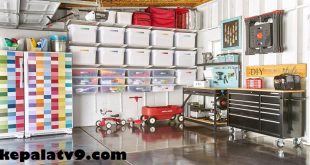Your roof is one of the most critical components of your home, providing protection against the elements. Over time, wear and tear, as well as weather-related damage, can lead to the need for repairs. While some roofing issues require professional attention, many minor repairs can be tackled as do-it-yourself (DIY) projects. In this article, we’ll explore the world of DIY roofing repairs, covering the basics, safety measures, and common problems you can address on your own.
Before You Begin
Before you climb up on your roof, it’s essential to take a few preliminary steps to ensure your safety and the effectiveness of your repair:
1. Safety First
Safety should be your top priority. Use proper safety gear, including a harness, gloves, and non-slip footwear. Avoid working on the roof during wet or windy conditions.
2. Assess the Damage
Carefully inspect your roof to identify the areas that need repair. Look for missing or damaged shingles, leaks, or signs of water damage on your ceilings or walls. Knowing the extent of the problem will help you plan your DIY repair effectively.
3. Gather Supplies
Ensure you have all the necessary tools and materials for your repair. This may include replacement shingles, roofing nails, a pry bar, a hammer, roofing adhesive, and a ladder.
Common DIY Roof Repairs
1. Replacing Damaged Shingles
One of the most common DIY roofing repairs is replacing damaged or missing shingles. Here’s how:
- Carefully lift the shingles above the damaged one using a pry bar.
- Remove the damaged shingle by loosening the roofing nails.
- Slide a new shingle into place, aligning it with the surrounding shingles.
- Secure the new shingle with roofing nails and seal the edges with roofing adhesive.
2. Fixing Leaks
If you notice a leak in your roof, it’s essential to address it promptly to prevent further damage to your home. Follow these steps:
- Identify the source of the leak by inspecting your attic or ceiling for water stains.
- Clear any debris or obstructions around the area.
- Apply roofing adhesive or a patching material to seal the leak. For larger leaks, consider using roofing cement and reinforcing it with a patch of flashing.
3. Securing Loose Flashing
Flashing is the material used to seal gaps and joints on your roof. If you notice loose or damaged flashing, here’s how to repair it:
- Lift the shingles above the damaged flashing using a pry bar.
- Remove the old flashing carefully.
- Install new flashing in the same location, ensuring it’s properly sealed and secured.
4. Cleaning and Maintenance
Regular roof maintenance can prevent the need for more extensive repairs. Clean your roof’s gutters, remove debris, and trim overhanging branches to prevent damage caused by clogged drains and falling branches. kepalatv9.com
When to Call a Professional
While DIY roofing repairs are cost-effective and suitable for minor issues, some situations call for professional expertise. Consider contacting a roofing contractor if:
- The damage is extensive and beyond your DIY skills.
- Your roof is still under warranty, and DIY repairs may void it.
- You’re uncomfortable or unsafe working at heights.
- The issue involves structural damage, such as sagging or rot.
Conclusion
DIY roofing repairs can save you money and help prolong the life of your roof. By following safety precautions, assessing damage, and using the right tools and materials, you can address many common roofing issues on your own. However, for significant damage or when safety is a concern, it’s best to consult a professional roofing contractor to ensure the job is done correctly and safely. Regular roof maintenance and prompt repairs can help protect your home and keep your roof in top condition for years to come.



